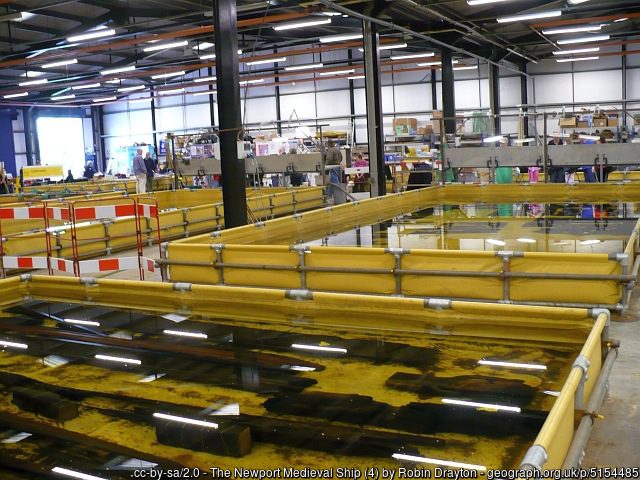Over 20 years after the wreck was first discovered, archaeologists are about to start rebuilding the medieval Newport Ship. Named for the city in South Wales where it was discovered, the wreck is thought to be of similar historical significance to the Mary Rose – and it’s even older.
Back in 2002, construction workers building a new theater on the banks of the River Usk stumbled upon an incredible archaeological find: the remains of a medieval sailing ship. The work was immediately halted so that the timbers could be lifted from the ground, piece by painstaking piece.
As the Newport Museums & Heritage Service point out on their website, there was a substantial sprinkling of luck involved in the discovery: “It was an accident of fate that the only part of the construction site that required deep excavation [the orchestra pit] would yield a medieval ship.”
Over the coming 20 years, the timbers would be cataloged and analyzed, as archaeologists sought to find out all they could about the vessel. Tree-ring analysis showed that the wood probably originated in the Basque Country, around 1449, and that’s most likely where the ship was built.
It’s thought that around 20 years later, in 1469, it ended up in Newport for repairs that went wrong – the hull of the ship seems to have flooded and the rest has been taken apart, so all we have left today is the lower hull.
In her heyday, the three-masted vessel would have measured over 30 meters (98 feet) long, and could have carried up to 200 tons of cargo along the Lisbon-Bristol trade route – Portugal was an important market for English and Welsh textiles.
The Newport Ship conservation project has now reached an important milestone. The conservation of the timbers, by coating them in wax and then freeze-drying them in batches, is now complete, and the team is ready to begin trying to piece the craft back together. Many of us will recall the fear and trepidation of embarking on an Ikea furniture build, Allen keys at the ready – this is just like that, only with substantially higher stakes.
“We have a massive, flat-pack ship that we need to reassemble and there are no instructions,” project curator Toby Jones told the BBC.
And, as if that wasn’t nerve-wracking enough, they’ll have an audience.
“You cannot build this thing then move it,” Jones added, so the team plans to reassemble the ship in the same location where it will eventually be displayed, affording the public a front-row seat.
One of the most famous examples of an excavated ship is the Mary Rose. It dates back to the 16th century, making the Newport Ship even older. Another crucial difference is that the Mary Rose was never actually taken apart, not down to the individual timbers anyway. Thankfully, the team working on the Newport Ship have been able to call upon the knowledge of Mary Rose experts to help them plan for the unique challenge of putting a ship back together.
The brilliant @MaryRoseMuseum sharing their expertise
Now these thousands of timbers will be pieced back together. pic.twitter.com/SSRepdIfke
Speaking to the BBC in 2020, Jones discussed one such challenge that comes with displaying a ship out of water: support.
“We want every visitor to see the ship from every angle without any view being blocked so the idea is to build the ship around an almost invisible cradle. It will provide comprehensive support which will take the weight of the ship so it can be enjoyed by generations.”
Source Link: How Archaeologists Will Rebuild The Newport Ship And Solve The “World’s Largest 3D Puzzle”
